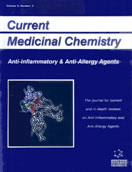Abstract
Approximately 20% of the general population have allergic symptoms of various forms. One third of these people have also ocular symptoms. Some forms of ocular allergy can cause severe symptoms and result in significant ocular morbidity. Allergic ocular disease consists of allergic conjunctivitis (including seasonal hay fever and perennial allergic rhinoconjunctivitis and acute anaphylaxis), giant papillary conjunctivitis (including vernalis, atopic keratoconjunctivitis and contact lens induced conjunctivitis), contact dermatokeratoconjunctivitis and microbioallergic disease. Histamine is the most prominent mediator in allergic ocular disease and causes increased vasopermeability, vasodilation, and bronchoconstriction, mediated through histamine receptors. Both H1 and H2 receptors have been identified on the ocular surface. Oral H1-receptor blockers can be given to relieve symptoms in the allergic ocular disease, but side effects such as sedation and systemic anticholinergic reactions are possible. Newer oral antihistamines such as astemizole and terfenadine supposedly have lesser side effects. Topical H1-receptor blocking antihistamine drugs are now available. Levocabastine is an agent with proven efficacy. There are no topical H2-receptor antagonists presently available for ocular use, but such agents have theoretic potential, especially in combination with an H1-receptor blocker
Keywords: ocular allergic disease, hay fever, allergic conjunctivitis, seasonal conjunctivitis, vernal conjunctivitis, atopic conjunctivitis, antihistamine, h receptor antagonist
 2
2

